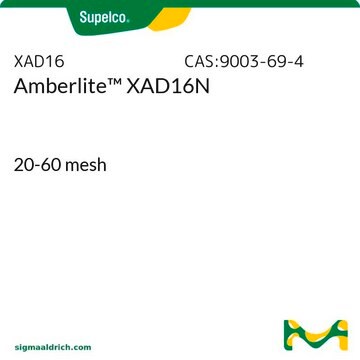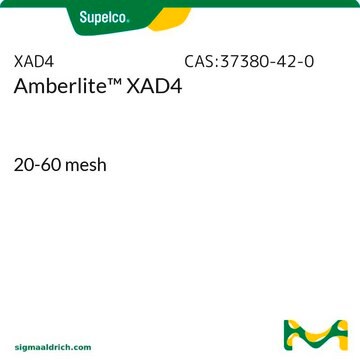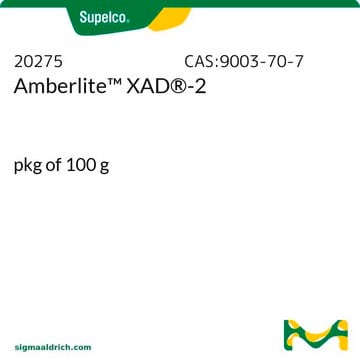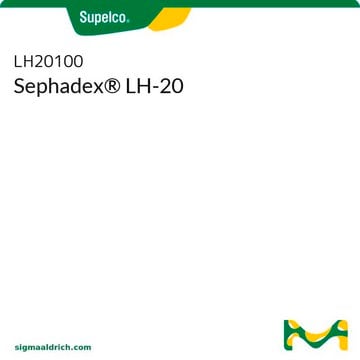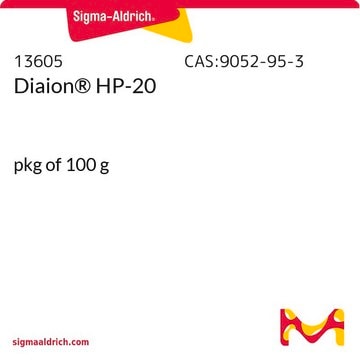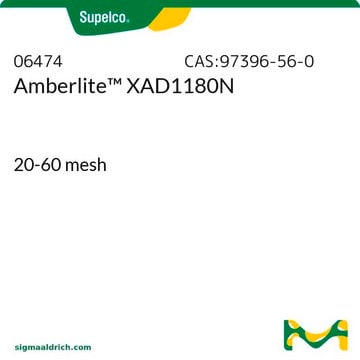XAD7
Amberlite™ XAD7HP polymeric adsorbent
20-60 mesh
Sinónimos:
weak anion exchange resin
About This Item
Productos recomendados
Nombre del producto
Amberlite™ XAD7, 20-60 mesh
densidad de vapor
<1 (vs air)
presión de vapor
17 mmHg ( 20 °C)
Formulario
beads
temp. de autoignición
800 °F
técnicas
LPLC: suitable
superficie
380 m2/g
Matriz
acrylic
grupo activo de la matriz
polymer
tamaño de partícula
20-60 mesh
560-710 μm
tamaño de poro
0.5 mL/g pore volume
300-400 Å mean pore size
técnica de separación
reversed phase
¿Está buscando productos similares? Visita Guía de comparación de productos
Descripción general
Aplicación
Otras notas
Mesh 20-60 is Cat. No. XAD7
Mesh 20-50 is Cat. No. 06445
Información legal
Código de clase de almacenamiento
11 - Combustible Solids
Clase de riesgo para el agua (WGK)
WGK 3
Punto de inflamabilidad (°F)
Not applicable
Punto de inflamabilidad (°C)
Not applicable
Equipo de protección personal
Eyeshields, Gloves, type N95 (US)
Elija entre una de las versiones más recientes:
Certificados de análisis (COA)
¿No ve la versión correcta?
Si necesita una versión concreta, puede buscar un certificado específico por el número de lote.
¿Ya tiene este producto?
Encuentre la documentación para los productos que ha comprado recientemente en la Biblioteca de documentos.
Nuestro equipo de científicos tiene experiencia en todas las áreas de investigación: Ciencias de la vida, Ciencia de los materiales, Síntesis química, Cromatografía, Analítica y muchas otras.
Póngase en contacto con el Servicio técnico